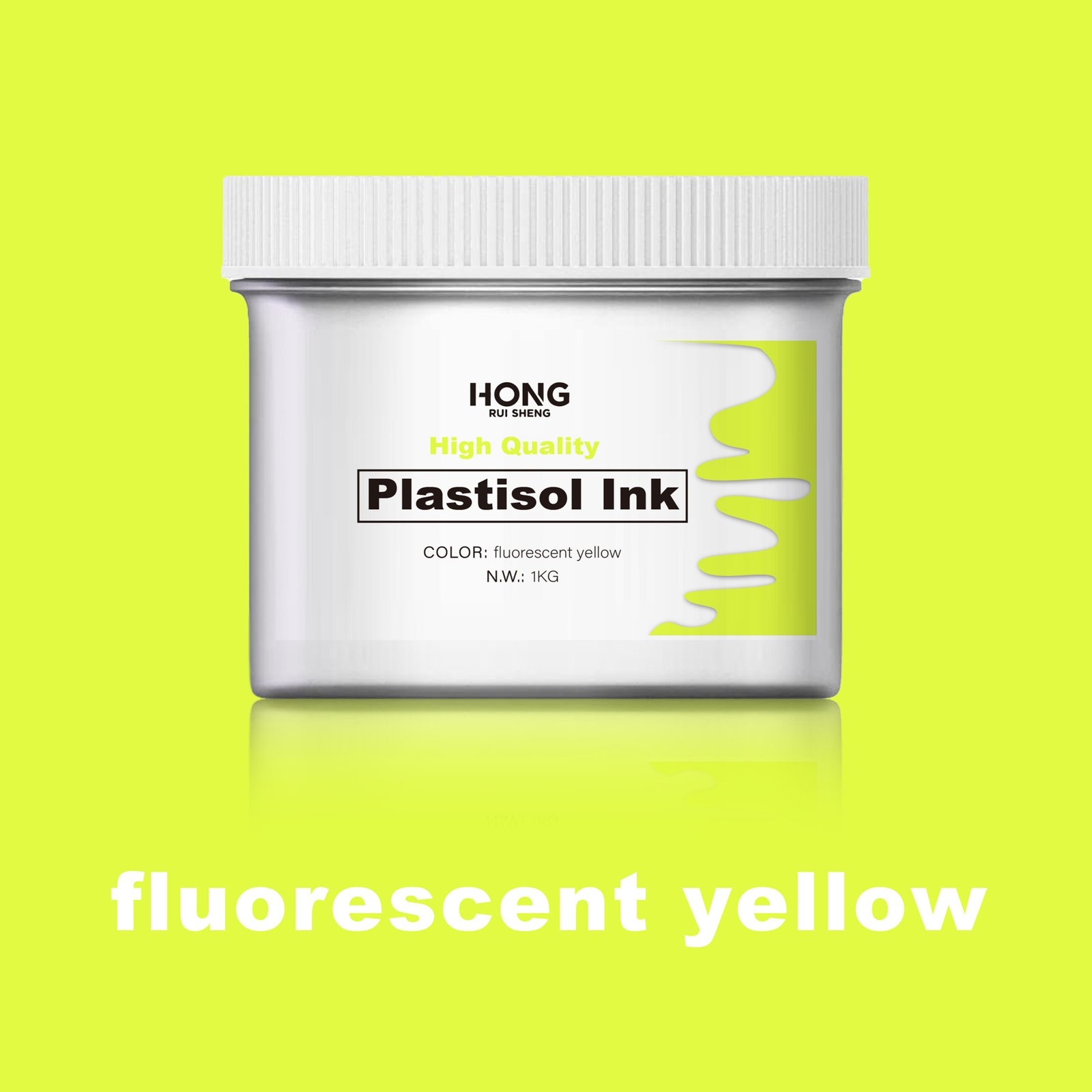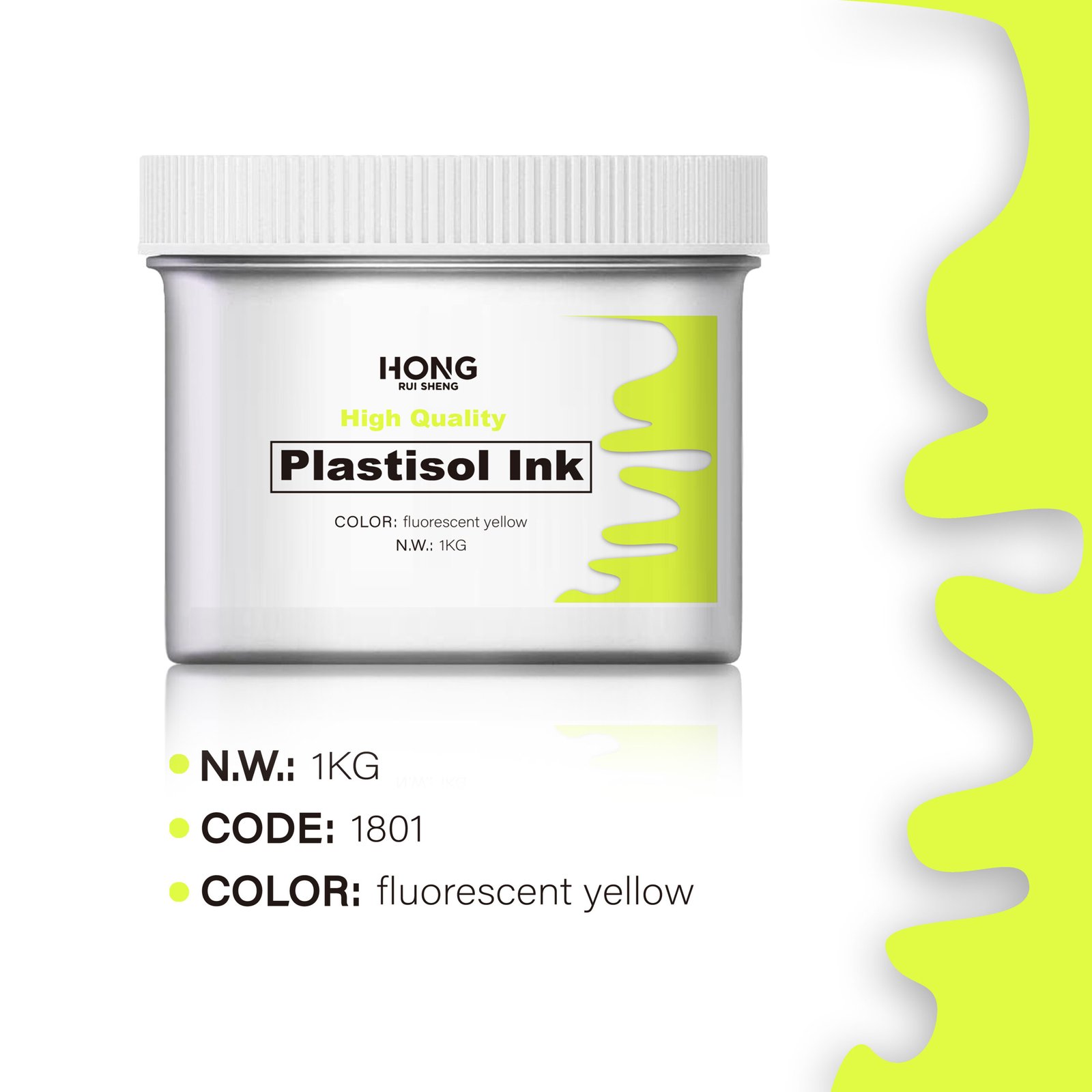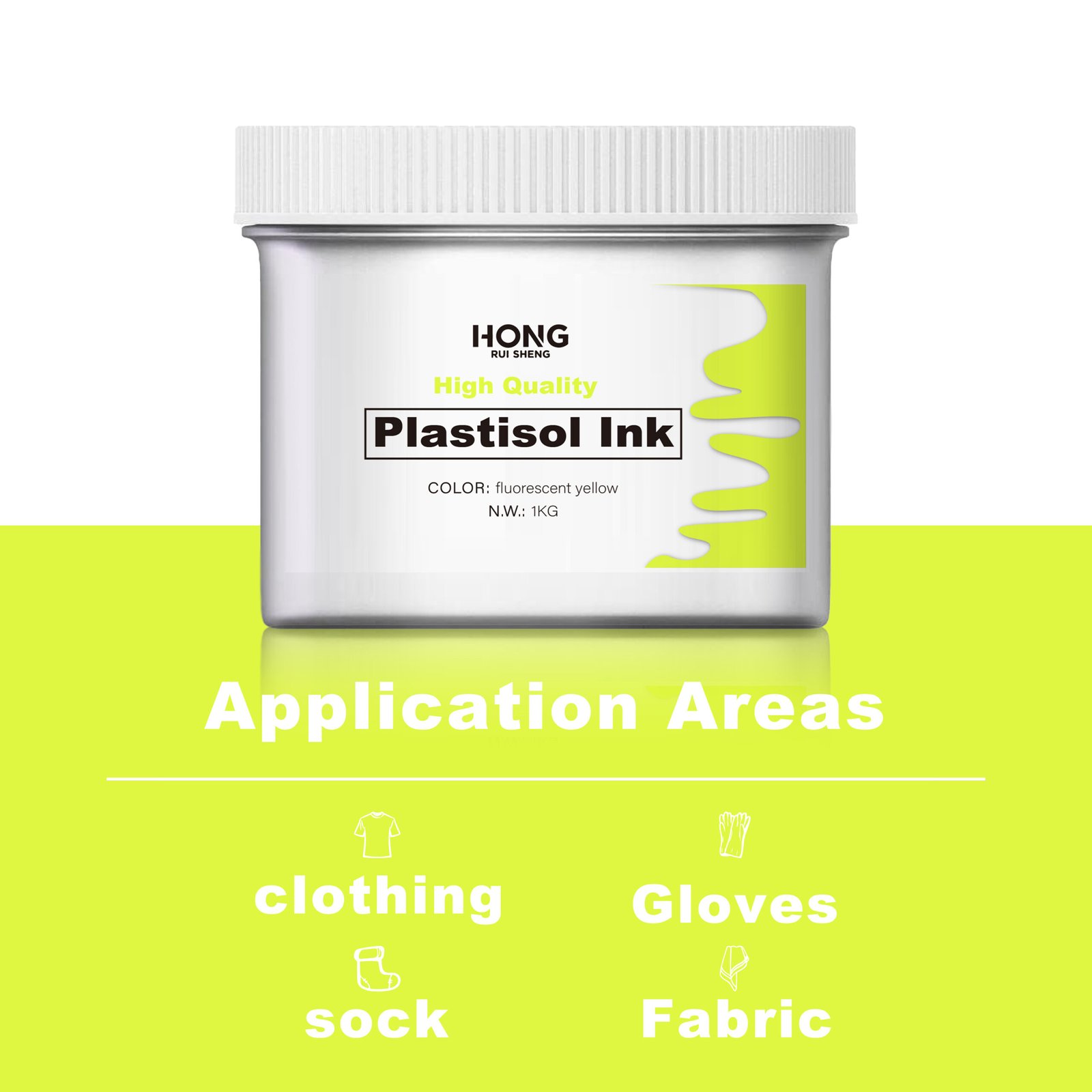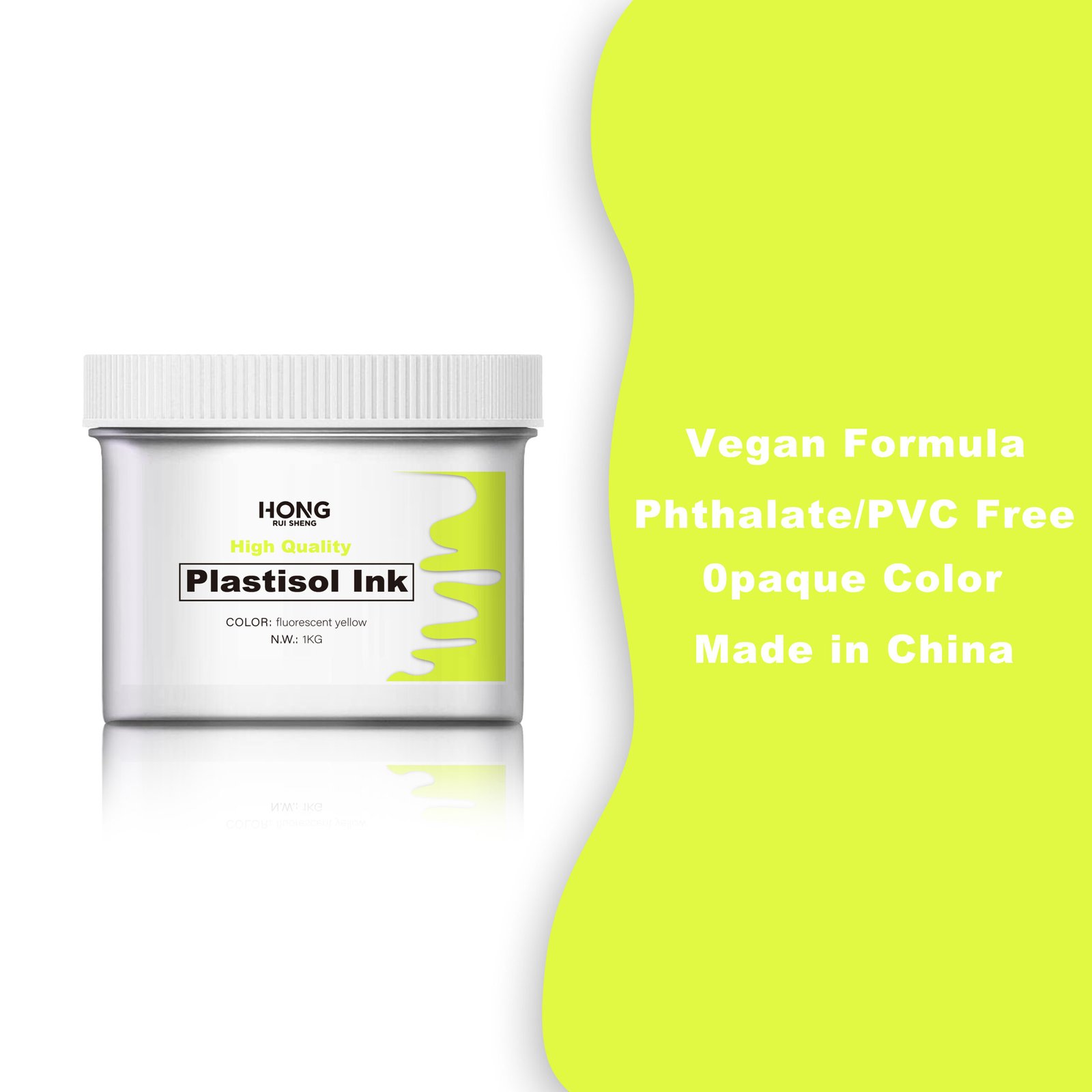Screen Printing Plastisol Ink is a versatile and durable ink designed specifically for fabric printing. It is the industry standard for screen printing due to its vibrant colors, opacity, and ease of use. Ideal for printing on dark and light garments, Plastisol ink creates bold, long-lasting prints that withstand multiple washes without fading or cracking.
- High Opacity: Offers excellent coverage, especially on dark garments.
- Vibrant Colors: Produces bright, vivid prints that stand out.
- Versatile Application: Suitable for cotton, polyester, and blends.
- Smooth Consistency: Easy to work with, ensuring even prints.
- Durable Finish: Resists cracking, peeling, and fading over time.
- Non-Water-Based: Does not dry out in the screen, allowing for extended working time.
- Wide Color Range: Available in standard, metallic, fluorescent, and custom colors.
- Longevity: Ensures prints remain vibrant and intact after multiple washes.
- Consistency: Reliable performance with every print, reducing waste and improving productivity.
- Ease of Use: Ideal for beginners and professionals alike, thanks to its forgiving nature and extended open time.
- Customizability: Mixes well with additives to achieve various effects, such as puff, gloss, or matte finishes.
- Viscosity: Medium to high, depending on the formula.
- Flash Time: 3-7 seconds at 220°F (105°C).
- Curing Temperature: 320°F (160°C) for 1-2 minutes.
- Mesh Count: Best used with 110-160 mesh screens for optimal coverage.
- Shelf Life: Up to 2 years when stored properly.
- Heat Press: Cure at 320°F (160°C) for 1-2 minutes. Ensure the entire print reaches this temperature to avoid under-curing, which can lead to washout.
- Conveyor Dryer: Adjust the speed and temperature so that the ink reaches 320°F (160°C) for the recommended time. Testing is advised to ensure proper curing.
- Screen Cleaning: Use a screen wash or mineral spirits to remove excess ink from the screen. Plastisol ink does not dry in the screen but should be cleaned promptly to avoid buildup.
- Tools & Equipment: Clean squeegees, spatulas, and other tools with a compatible solvent cleaner immediately after use to prevent ink from hardening.
- Temperature: Store in a cool, dry place between 65-90°F (18-32°C).
- Container: Keep the container tightly sealed when not in use to prevent contamination and drying out.
- Shelf Life: If stored properly, the ink will remain usable for up to 2 years.
- Packaging: Ensure containers are sealed tightly to prevent leaks. Use secondary packaging, such as plastic bags or spill-proof containers, for added protection.
- Temperature Control: Avoid exposing the ink to extreme temperatures during transport. High temperatures can cause the ink to become too fluid, while freezing temperatures may lead to separation.
- Handling: Handle with care to prevent punctures or spills. Transport upright and securely to minimize movement.
- Refer to the Safety Data Sheet (SDS) for detailed safety and handling information.
- Use protective gloves and eyewear when handling ink.
- Ensure proper ventilation during application and curing.
Screen Printing Fluorescent Yellow Plastisol Ink — CHJT-1801
Smell: No odor plastisol ink, can be used indoors and outdoors
Elasticity: Good stretch for stretch fabrics
Durability: Good wash fastness and color stability.
Durability: High wash fastness and not easy to fade.
Printability: Smooth application with minimal bleeding.
High Opacity: All have good opacity
Characteristics: Excellent covering power
High-quality Screen Printing Plastisol Ink delivers vibrant colors, excellent coverage, and durability for long-lasting, professional prints.
CHJT—Series Mid-high eco-friendly series with phthalate gree Npeo free suitable for mid-high brands that offers excellent hiding power, durability and resilience, and does not bleed. It is extremely washable, without fading or deterioration.
Compatible with a wide range of fabrics, including cotton, polyester, and blends, and is suitable for both manual and automatic printing processes.
Related products
- Plastisol Ink—HF Series
Screen Printing Bright Blue Plastisol Ink — HF-1404
- Plastisol Ink—HF Series
Screen Printing Blue Plastisol Ink — HF-1402
- Plastisol Ink—HF Series
Screen Printing Blue Plastisol Ink — HF-1401
- Plastisol Ink—HF Series
Screen Printing Magenta Plastisol Ink — HF-1204








